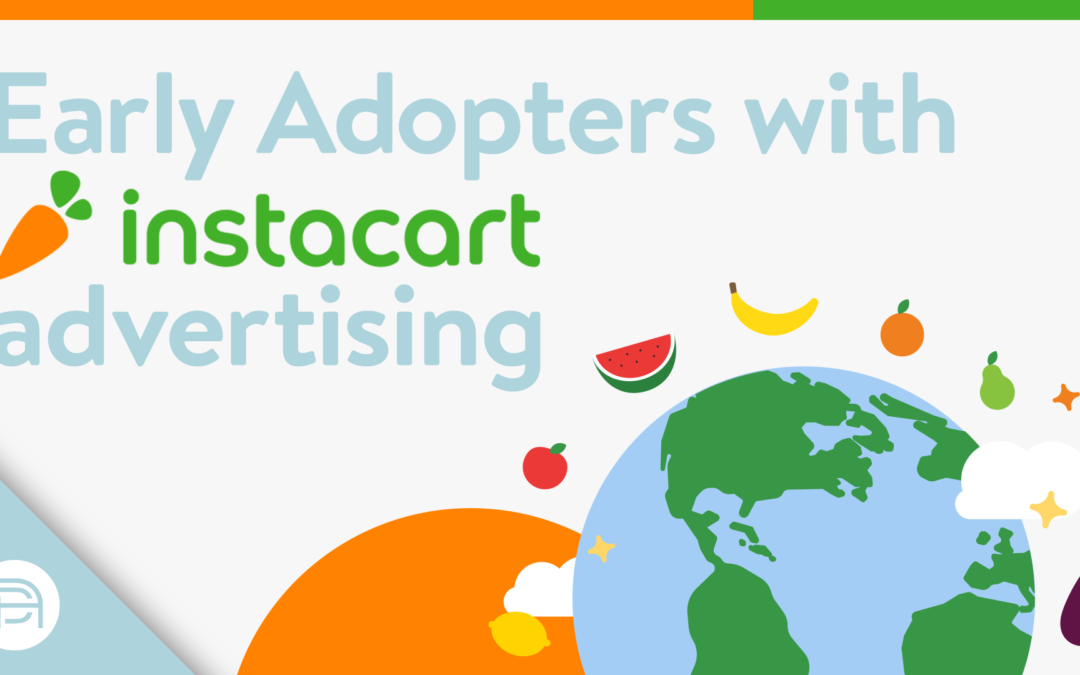COVID-19 accelerates the movement of groceries online
Consumer demand for online grocery continues to grow exponentially as COVID-19 drags on. Pre-pandemic, experts previously thought a 15% e-commerce penetration for the grocery market was a pipe dream. However, in the wake of COVID-19, market research suggests that the grocery category is now one of the fastest-growing eCommerce segments in 2020, up to $106 billion from $35 billion in 2019. And this trend will only continue in the coming years. According to a study by Mercatus, up to 21.5% of grocery sales could move to eCommerce by 2025, indicating a critical need for grocery brands to include digital advertising as a part of their marketing strategy moving forward.
Instacart enters online grocery as a key player
Following the wait times with Amazon Fresh in April 2020, customers began looking for more ways to get groceries delivered to minimize their in-store time. Enter, Instacart.
In April 2020, Instacart reported its first profit in months, selling $1.4 billion of groceries within the first 2 weeks by closing the gap and allowing customers to get groceries safely. Instacart continued to grow rapidly, reaching a $13.7 billion valuation in 2020 and expanding its reach to over 5,500 cities across the US and Canada.
According to Second Measure, Instacart overtook Walmart Grocery in June 2020 for eCommerce market share.
Hot on the heels of its success, Instacart launched its advertising platform in May 2020. The self-service platform allows brands to set budgets and select products to promote, only paying when Instacart users engage with those products.
How do Instacart ads work?
Instacart advertising uses a second price pay-per-click (PPC) auction model similar to the Walmart marketplace, where the auction winner pays $0.01 more than the second highest bidder. Their main ad format is a native-looking ‘featured product ad’ comparable to Amazon’s Sponsored Product ad.
Ads are organized into campaigns and then further into product groups. To ensure relevancy, featured product ads only show where geographically available and only when in stock.
Instacart advertising offers both automatic (algorithm-based) and manual (keyword) targeting options for advertisers to discover new keywords and optimize their ads based on performance. For manual targeting, an exact match is allowed exclusively and there are currently no options for negative keyword targeting. Sales are linked to ad campaigns based on a 14-day attribution window based on the customer’s last clicked product.
In addition to search advertising, Instacart offers a variety of other promotions such as shipping discounts i.e. free delivery, coupons and Buy one Get one offers. Instacart also offers hero banner ads (similar to Amazon’s Sponsored Brands format) which can include promotions.
Why should I start with Instacart?
If the reasons above aren’t compelling enough, another key benefit of being an early adopter is decreased competition on the platform. This means lower ad costs and a chance to be a first mover in the space.
Reach out to us at [email protected] to learn more about getting started with Instacart management.

